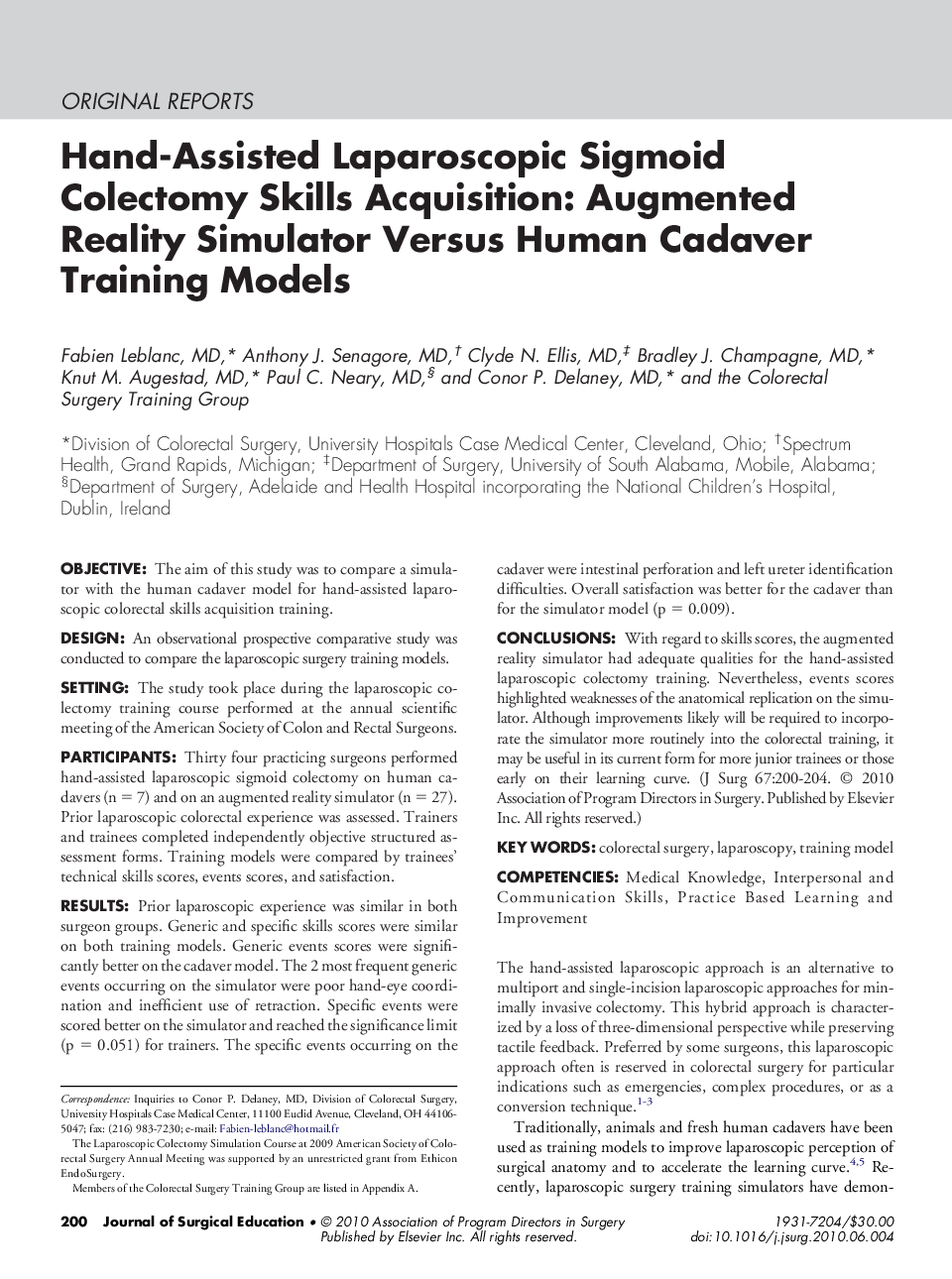| Article ID | Journal | Published Year | Pages | File Type |
|---|---|---|---|---|
| 4298605 | Journal of Surgical Education | 2010 | 5 Pages |
ObjectiveThe aim of this study was to compare a simulator with the human cadaver model for hand-assisted laparoscopic colorectal skills acquisition training.DesignAn observational prospective comparative study was conducted to compare the laparoscopic surgery training models.SettingThe study took place during the laparoscopic colectomy training course performed at the annual scientific meeting of the American Society of Colon and Rectal Surgeons.ParticipantsThirty four practicing surgeons performed hand-assisted laparoscopic sigmoid colectomy on human cadavers (n = 7) and on an augmented reality simulator (n = 27). Prior laparoscopic colorectal experience was assessed. Trainers and trainees completed independently objective structured assessment forms. Training models were compared by trainees' technical skills scores, events scores, and satisfaction.ResultsPrior laparoscopic experience was similar in both surgeon groups. Generic and specific skills scores were similar on both training models. Generic events scores were significantly better on the cadaver model. The 2 most frequent generic events occurring on the simulator were poor hand-eye coordination and inefficient use of retraction. Specific events were scored better on the simulator and reached the significance limit (p = 0.051) for trainers. The specific events occurring on the cadaver were intestinal perforation and left ureter identification difficulties. Overall satisfaction was better for the cadaver than for the simulator model (p = 0.009).ConclusionsWith regard to skills scores, the augmented reality simulator had adequate qualities for the hand-assisted laparoscopic colectomy training. Nevertheless, events scores highlighted weaknesses of the anatomical replication on the simulator. Although improvements likely will be required to incorporate the simulator more routinely into the colorectal training, it may be useful in its current form for more junior trainees or those early on their learning curve.
